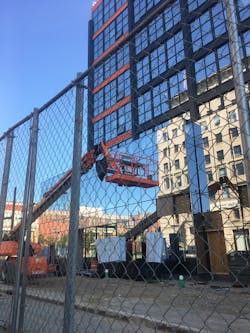FMI Releases Overview & Outlook: Growth with Setbacks
RALEIGH, NC (January 26, 2022) – FMI Corporation, the leading provider of consulting and investment banking services to the built environment, released its 2022 Engineering and Construction Industry Overview today. The report provides a comprehensive forecast for a broad range of construction and engineering segments in the U.S. and Canada for 2022.
Entering 2022, FMI expects construction spending to increase by five percent. But that growth will be offset by inflation, supply chain snarls, a shortage of workers and project delays. Now, more than ever, sources say, it’s important for companies to think critically about the criteria used to bid and execute projects to maintain appropriate risk levels.
“There is an abundance of market opportunities out there for firms that stay focused on where to do business and how to make sure they’re in the right markets and sectors, working with the right clients and project partners,” writes FMI Chief Executive Officer Chris Daum in the introduction.
In addition to FMI’s market commentary, key highlights of the report include:
- Total engineering and construction spending for the U.S. is forecast to end 2021 up eight percent compared to a six percent increase in 2020, led primarily by residential.
- Looking at 2022, FMI forecasts five percent growth in engineering and construction spending levels compared to 2021.
- Growth segments in 2021 are expected to include all residential segments (single-family, multifamily and improvements) as well as commercial, manufacturing, and sewage and waste disposal construction, each with annual growth rates of 5% or higher.
- A limited number of segments are expected to end the year with low growth rates between 0 percent and four percent, or roughly in line with historical inflation. These stable segments include water supply, health care, and highway and street.
- The majority, or 10 of the 16, nonresidential segments will end the year down. Declines through 2021 will be realized across the lodging, office, educational, public safety, religious, amusement and recreation, transportation, communication, power, and conservation and development segments.
- The latest Nonresidential Construction Index (NRCI) feedback suggests continued optimism heading into the first quarter of 2022, at 54.8, up slightly from 53.8 in the prior quarter. The index has dropped from highs nearing 60 in the third quarter of 2021 but remains expansionary and suggests increased opportunities for engineering and construction ahead.
